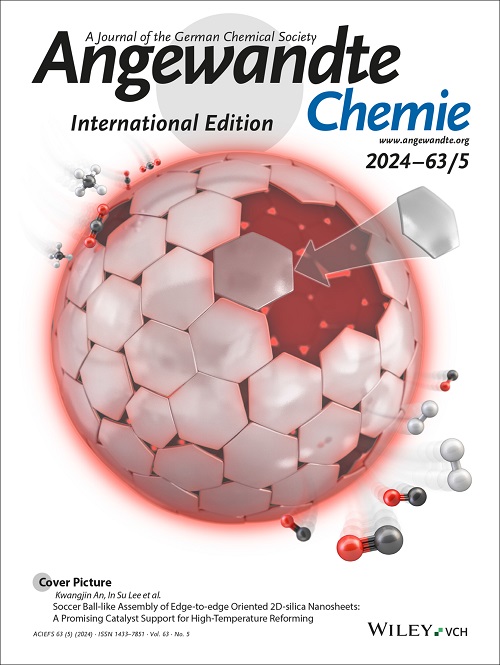Artificial Cation-Chloride Co-transporters for Chloride-Facilitated Lithium/Magnesium Separation
IF 16.1
1区 化学
Q1 CHEMISTRY, MULTIDISCIPLINARY
引用次数: 0
Abstract
Inspired by nature, many artificial ion sieving materials have been developed, shedding light on the next-generation ion, e.g., Li+, extraction applications. Artificial co-transporters remain notoriously difficult to construct since they have a much more complex ion sieving property. For example, the cation-chloride co-transporters have both alkaline ion and chloride ion selectivity but no alkaline ion/chloride ion selectivity. We here demonstrate a method to construct artificial co-transporters, using a porous organic framework membrane which has relatively disordered stacking structure and rich quaternary ammonium groups paired with counter-ions. This imparts the membrane with extremely narrow pores (~0.3 nm) and almost no surface charge, enabling size-based high alkaline ion selectivity against other cations, high Cl- selectivity against other anions, but almost no alkaline ion/Cl- selectivity. Such synchronized sieving property further allows us to enhance the extraction of high-value cations (Li+) by simply feeding excessive low-value anions (Cl-). As a demonstration, we realized high-flux (0.44 mol m-2 h-1, driven by only concentration gradient) and highly selective (selectivity: 185) Li+/Mg2+ separation by reversing the current industrial brine-based lithium extraction process, i.e., sieving Li+ before removing NaCl.求助全文
约1分钟内获得全文
求助全文
来源期刊
CiteScore
26.60
自引率
6.60%
发文量
3549
审稿时长
1.5 months
期刊介绍:
Angewandte Chemie, a journal of the German Chemical Society (GDCh), maintains a leading position among scholarly journals in general chemistry with an impressive Impact Factor of 16.6 (2022 Journal Citation Reports, Clarivate, 2023). Published weekly in a reader-friendly format, it features new articles almost every day. Established in 1887, Angewandte Chemie is a prominent chemistry journal, offering a dynamic blend of Review-type articles, Highlights, Communications, and Research Articles on a weekly basis, making it unique in the field.

 求助内容:
求助内容: 应助结果提醒方式:
应助结果提醒方式:


